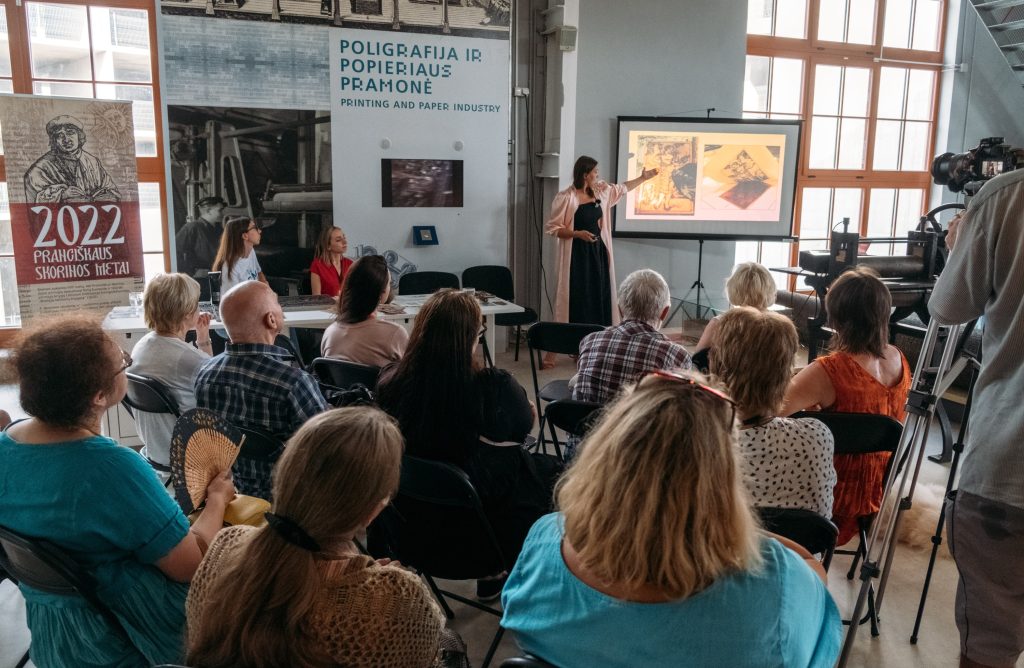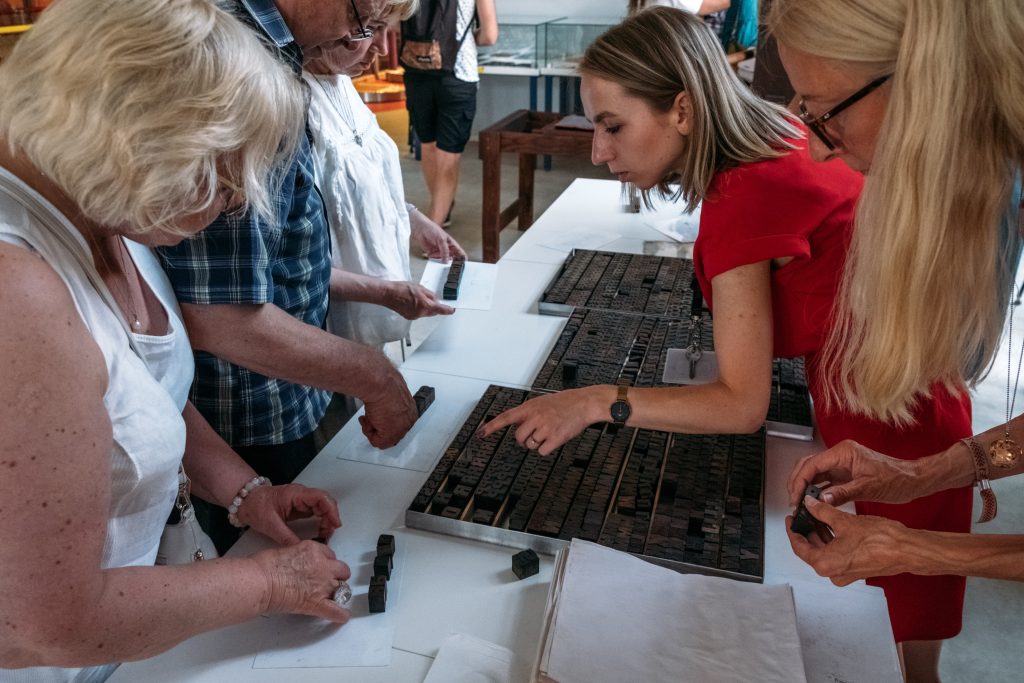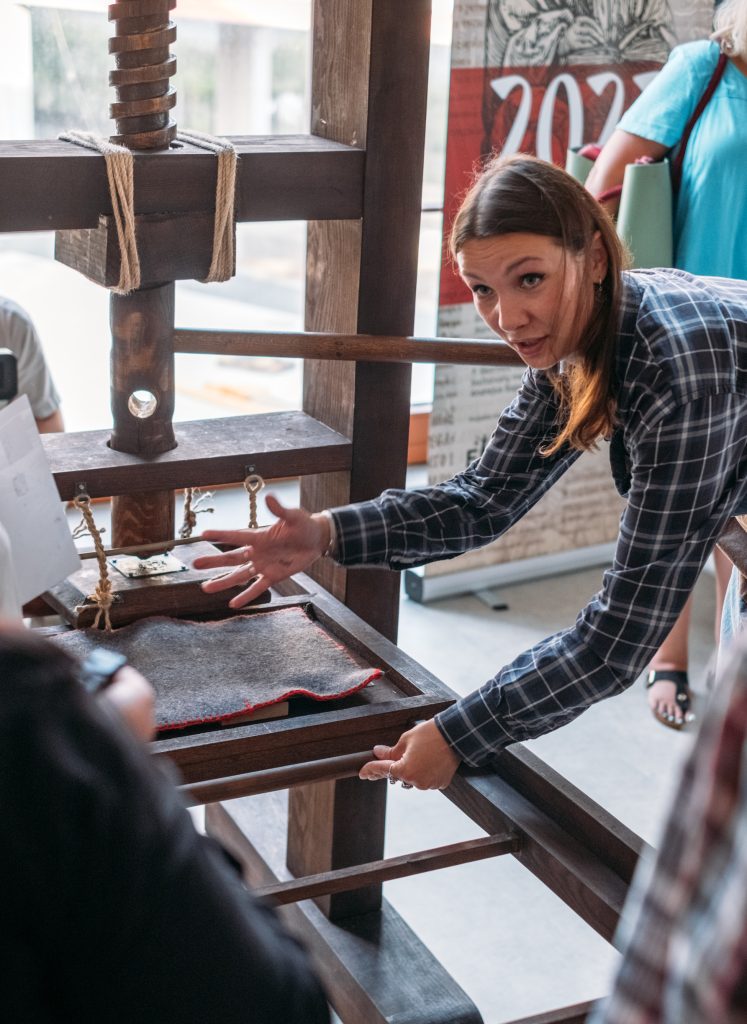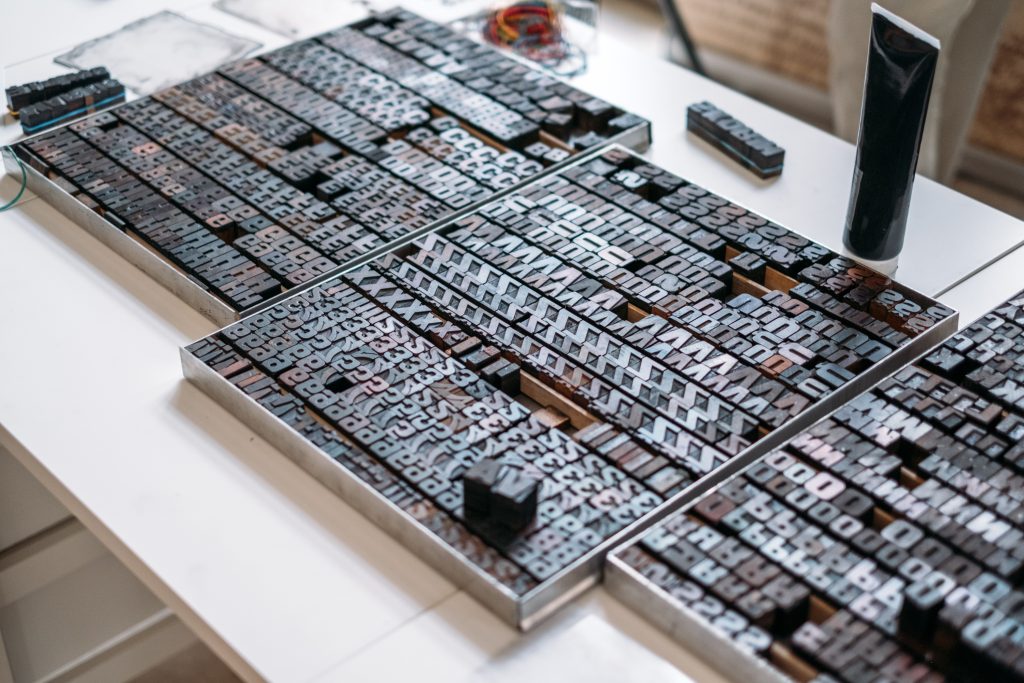In 2022, we celebrated the year of Francysk Skaryna. Skaryna, who travelled a lot in Western Europe, lived and worked in Vilnius for a short period, founded the first printing house here and published the first books in the territory of the Grand Duchy of Lithuania, so he entered the history of Lithuanian culture as the author and publisher of the first book.
Belarusian artists, who left Belarus in 2020, Sviatlana Petushkova and Andrej Shaporov initiated the restoration of Skaryna printing press at the Energy and Technology Museum. Now the press is exhibited in the Industry Exposition of the museum.
Mykolas Bistrickas, director of the Energy and Technology Museum, said: “Skaryna is not only the author of the first book published in the Grand Duchy of Lithuania, but also a humanist, a broad-minded layman who sought to make religious readings, the main educational publications, accessible and understandable to everyone. During this project, we managed to reach many visitors, tell them the story of printing and graphics in an engaging way. By announcing the year of historical figures, we are uniting schools, museums, state and cultural institutions to talk about a relevant topic together, so this initiative is welcome, and in the coming year we hope to celebrate two more dedications to historical figures.”


Sviatlana Petushkova and Andrej Shaporov. Photos by Andrius Šatas (Energy and Technology Museum)
The word has spread
As Skaryna’s year is coming to an end, Petushkova and Shaporov assessed that a considerable audience had learned about Skaryna. “Here’s a story – once I was walking down the street past a group of young people who, having noticed me, started talking to each other, how someone of them had seen me at the press in the museum. Let’s face the truth – the word has spread,” Shaporov recalled.
“I hope that thanks to our work, people learned about Skaryna and his work, Petushkova said. This year, we put a lot of effort into it. In addition to working with the museum, we also gave lectures and printed graphics in various places in Lithuania, held many master classes and even took the press to the biker festival, where we printed engravings of the “Little Travel Book” together with the bikers.”


Petushkova’s lecture “Printed Graphics from Origins to Today”.
In Lithuania, Martynas Mažvydas, his work and the first edition of the catechism of 1547 in well known. P. Skaryna’s “Little Travel Book” was written in Ruthenian 25 years earlier (in 1522). “As we know, Johann Gutenberg’s invention marked the beginning of the Renaissance in Europe. I am sure that due to the invention of printing, education became accessible to more people in Europe,” Petushkova stated. How do we popularize Skaryna so that he takes his rightful place in history? “He who seeks, finds. People who have a desire to learn something new are always in search of information. The Internet is full of amazing historical publications, museums are open to everyone. Everything else depends on the people – they should be able to decide what they are interested in,“ the interviewer thought.
According to Shaporov, history puts everything in its place. “Let’s admit, Skaryna is best known in the Slavic cultural context. According to statistics, in Lithuania only 10 percent of population (Russians, Belarusians, Ukrainians) consider themselves Slavs. Considering this, it is probably fair that Mažvydas is better known,” he calculated.


Karolina Koroliova-Barkova at the “Skaryna Press Workshop”.
Felt like printers themselves
The project of the Energy and Technology Museum took place throughout the year – at the end of 2021, the press was restored, and since the summer, the “Skaryna Press Workshop” has been held here every weekend, where visitors got to know the old press technologies.
“When creating these activities, we thought a lot about authenticity – we collected letters from the museum’s funds, consulted with the artists about which letter fonts, materials, paints, their colour and paper to use, said workshop educator Karolina Koroliova-Barkova. The museum is a family museum, it is visited by many schoolchildren and visitors of various ages – children, young people, families and, of course, those interested in the press or publishing, soon became the main audience of the workshop.”


Petushkova at the “Skaryna Press Workshop”.
A frequent press workshop participant was surprised by the complexity of the press process. The guide and educator remembered that when the children collected the text using the mirror principle and placed it under the press, at first, they didn’t understand how the correct word would appear. “Once they’ve read their name or whatever they wrote, they were very happy. And while working with paint, later cleaning the letters, they felt like printers, – said Koroliova-Barkova and added: The education fulfilled not only the educational mission of spreading the news about Skaryna, but also broke the stereotypes of the classical museum – here we can get to know history by playing with letters (real exhibits!), touching and testing them, immersing ourselves both in the game and in the past. This is the uniqueness of this museum.”
The Slavic countries were united
Skaryna’s printing house did not work for a long time and burned down in a fire, but it had a great influence on the people of Vilnius and representatives of different faiths and led to the establishment of other printing houses near the monasteries and the university. “In Vilnius, everything started with Skaryna. He was the first to bring a printing press, paints, and letters to the city, revealed the backstage of Gutenberg’s printing press, introduced the locals to this technology, and the people of Vilnius understood that publishing their books and brochures is much simpler and faster,” the guide spoke.
The copy of the Skaryna press, which was restored by Shaporov after studying the presses of that time, will continue to remain in the Energy and Technology Museum as an interactive exhibit. “Since the beginning of Skaryna’s year, we have sought to make the press not just a static exhibit. In the activities of the museum, we primarily follow the principle of informal education – the visitor absorbs information better if he can experience it, find out how it works and then ask questions – why does it work and, most importantly, what is the significance of this invention?” Bistrickas said.


The museum exhibit – authentic letters.
This year, the artists became members of the Lithuanian Artists’ Association, held personal exhibitions and helped organize exhibitions of compatriots and Ukrainians. They’re increasingly interested in photographic printing and techniques.
The “Skaryna Press Workshop” will continue to be open to students and visitors. The press can be viewed on site, information can be red in Lithuanian, English, and Russian languages. “It is interesting that almost an international team joined the project – Belarusian artists, guides-educators who graduated from Polish and Ukrainian universities. Skaryna is known not only in Belarus or Lithuania, but also in many countries where he lived,” Bistrickas noted.
https://www.youtube.com/watch?v=_HIa9Qdg-Ds
2022 was declared the year of Skaryna by the Seimas of the Republic of Lithuania, the project was implemented by the Energy and Technology Museum and sponsored by Ministry of Culture of the Republic of Lithuania.

